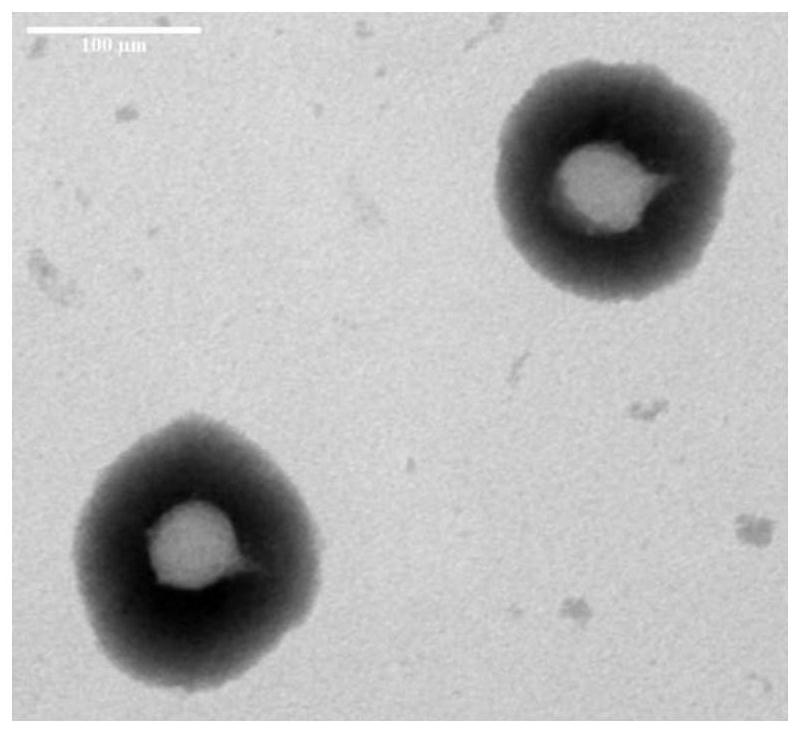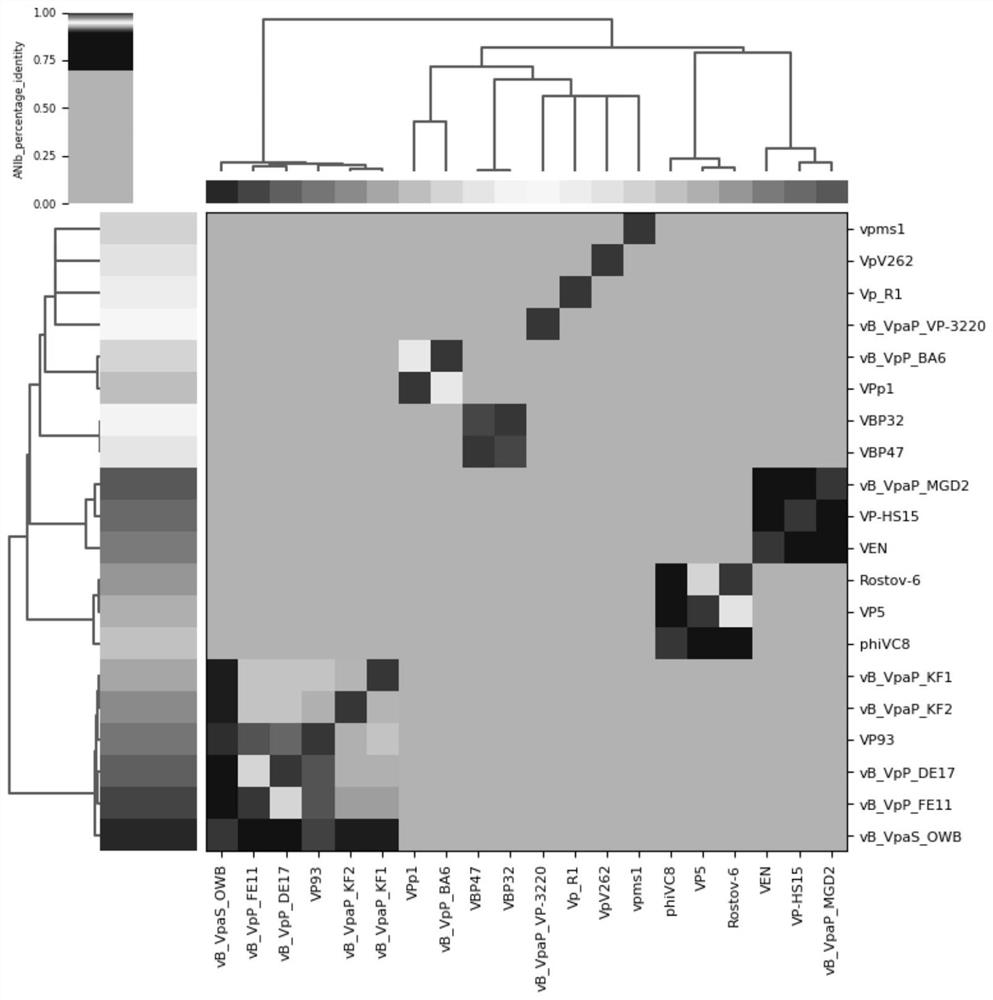Vibrio parahaemolyticus lytic bacteriophage vB_VpP_DE17 and application thereof
A hemolytic vibrio and phage technology, applied in the direction of phage, virus/phage, and medical raw materials derived from virus/phage, can solve threats, irreversible damage to the native microbial ecosystem, antibiotic residues, human health, etc.
- Summary
- Abstract
- Description
- Claims
- Application Information
AI Technical Summary
Problems solved by technology
Method used
Image
Examples
Embodiment 1
[0028] The isolation and cultivation of embodiment 1 phage
[0029] (1) Activation and cultivation of host bacteria
[0030] The food-borne Vibrio parahaemolyticus used in this study was provided by the Guangdong Provincial Institute of Microbiology. Take the dry powder tube out of the refrigerator at 4°C, smash the tube opening, take it out with a sterile tip, and add it to 3% sodium chloride alkaline peptone. In water, cultured in a shaker at 37°C, 200rpm / min for 24 hours, and then identified by streaking on the Vibrio color plate, picked a single colony and inoculated it in 5mL TSB liquid medium, cultured at 37°C, 200rpm / min After 24 hours, a single suspension was obtained.
[0031] (2) Isolation and purification of phage
[0032] On April 10, 2019, water samples were collected from the sewer of Guangzhou Huangsha Aquatic Products Market. The sewage samples were centrifuged at 8000g for 10 minutes at room temperature, and the supernatant was filtered through a 0.45μm filt...
Embodiment 2
[0033] The phage identification of embodiment 2 phage
[0034] (1) Phage morphology identification
[0035] Take 15 μl of 1 x 10 10The pfu / mL phage sample was dropped onto the microporous copper grid, allowed to settle naturally for 15 minutes, absorbed the excess liquid with filter paper, and stained with 10 μl phosphotungstic acid (2%) for 5 minutes, absorbed the excess liquid with filter paper, dried naturally and used transmission Look for phage particles with an electron microscope, observe their shape, and take pictures for records. For specific pictures, see figure 1 , phage DE17 has an icosahedral head and a short and contracted tail, and its head length, head width, and tail length are 47, 46, and 17 nm, respectively. According to its morphological characteristics combined with the formal taxonomic code of ICTV, phage DE17 fits the typical characteristics of Caudoviricetes Podoviridae.
[0036] (2) Molecular biology identification of phage
[0037] 1) Genome extra...
Embodiment 3
[0049] Example 3 Detection of biological characteristics of phage DE17 (1) Titer determination of phage DE17
[0050] The determination of the phage titer was determined by the double-layer plate method. First, the purified phage expansion medium was serially diluted 10 times, and an appropriate dilution was selected, and 100 μL of the phage dilution and 100 μL of the parasite cultured to the logarithmic phase were drawn respectively. Vibrio hemolyticus O4-12 bacterium liquid, add the TSB (containing 0.2% technical agar, 2mM CaCl 2 ), mix thoroughly, pour on TSA plates, and do 3 parallel repetitions for each dilution. After the soft agar is solidified, place it in a constant temperature incubator at 37°C for 5 to 8 hours, observe and count the plates with 30 to 300 plaques, and calculate the titer of phage DE17 to be 1.27×10 10 pfu / mL.
[0051] (2) Determination of optimal multiplicity of infection (MOI) of phage DE17
[0052] Propagate phage DE17 and its Vibrio parahaemoly...
PUM
 Login to View More
Login to View More Abstract
Description
Claims
Application Information
 Login to View More
Login to View More - R&D
- Intellectual Property
- Life Sciences
- Materials
- Tech Scout
- Unparalleled Data Quality
- Higher Quality Content
- 60% Fewer Hallucinations
Browse by: Latest US Patents, China's latest patents, Technical Efficacy Thesaurus, Application Domain, Technology Topic, Popular Technical Reports.
© 2025 PatSnap. All rights reserved.Legal|Privacy policy|Modern Slavery Act Transparency Statement|Sitemap|About US| Contact US: help@patsnap.com



